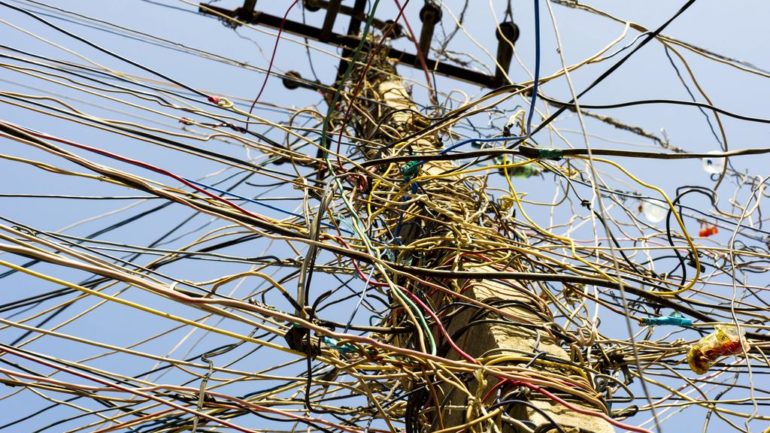Blog

Where technology meets policy – Uttar Pradesh’s experiment with smart-metering continues
India loses over 230 Terawatt hours (TWh) of electricity through its transmission & distribution networks every year – nearly enough to power the entire country of Indonesia for as long. The northern State of Uttar Pradesh is responsible for the lion’s share, with almost 21 TWh’s of losses coming from there alone. As a result, the state’s electricity utilities are amongst the worst performing in the country. To make matters worse, Uttar Pradesh is also the second least electrified state with a coverage rate of only about 43% and has utilities burdened with debt worth over INR 71,000 Crore (~10 billion USD).
AT&C losses represent lost revenue due to technical losses, consumption of unbilled or stolen electricity, as well as financial shortfalls caused by operational inefficiency. Technical (T&D) losses however, are only energy losses caused by friction and resistance; they are an unavoidable outcome of any physical system. Even assuming their highest possible value of about 12% (they usually range between 2-5%), T&D losses would still account for less than half of the AT&C losses in Uttar Pradesh, implying that the remainder – over 11,000 MU per year – results from theft, unpaid bills, and corporate inefficiency.
Reducing T&D losses are usually a straightforward result of improved infrastructure, using more highly-conductive materials etc. Combatting man-made ‘non-technical’ losses, on the other hand, are known to be notoriously difficult due to the number of players involved, each with their own set of considerations and incentives; discoms would like to maximise their earnings, while politicians pander to vote banks who want cheap or free electricity. The Yogi Adityanath led BJP state government has proposed rolling out 50 lakh (5,000,000) smart-meters that not only ensure greater transparency but also enable two-way communication by which non-compliant customers’ supply can be switched off in case they are not paying their dues. Of course, their ability to actually reduce theft depends on the visible benefits they provide to various stakeholders – which is where policy comes in.
Odd-Helge Fjedlstad, describes people’s willingness to pay for service charges as dependent on their trust in the government to appropriately use revenue to maintain and improve services in an equitable manner. It follows that newly ‘smart-metered’ households that must now start paying their bills need to see an improvement in either the number of hours of electricity provided, or reduced voltage fluctuations, for the payment to seem ‘worth it’. This can be done through better supply management and demand-response by the utilities, and the smart-meters may also be used to avoid line congestion and generation overload.
Sharma et al allude to the under-scrutinised role of employee-based-theft as a significant cause of AT&C losses. They state that for a system to become more efficient and reduce leakages, the ability of politicians and employees to obscure information and/or facilitate corrupt practices is the direct result of system opacity[2]. Another benefit of using smart-meters to this end, is that it can create a system that ‘monitors the monitors’, reducing opportunities for employee “connivance” and political influence. Using some of the increased revenues from bill collections can be used to provide monetary incentives for employees to actively work against corruptions in the system.
The use of smart meters in this regard has been attempted before in Kanpur in 2011, though public push-back and political friction didn’t allow the infrastructure to translate into tangible results. So, what is different this time? Well, under the UDAY scheme, the UP state government has agreed to take on 75% of the discoms’ debt under the conditions that AT&C losses are reduced to 15% by 2018, and service is improved in areas where theft is reduced. The hope is that stipulations such as these will align the incentives of local politicians, discoms, and consumers in a way that relies on the continued utilisation of smart meters with the eventual financial self-sufficiency of discoms in mind.
Building upon the success of the Restructured Accelerated Power Development and Reform Programme (RAPDRP) The UDAY scheme has already cut the combined losses of cash-strapped utilities in the country by 22% and Uttar Pradesh specifically has seen a 28% rise in bill collections post implementation of the
Vidyut Chori Roko Abhiyan – a scheme by which electricity ‘thieves’ can claim amnesty if they agree to installation of a smart-metered connection. The continued success of these schemes relies on the ability of the state to incentivise law enforcement and employees to reduce theft, crackdown on those who are caught, create community buy-in through improving service for bill-payers, and constantly monitor and provide third party regulation to ensure compliance. All of these steps presume the open access to real-time reliable data which is the underlying logic behind using smart-meters.
Raghav Anand is an international student pursuing his MA at the Johns Hopkins School of Advanced International Studies where he is concentrating in Energy, Resources, and the Environment.
